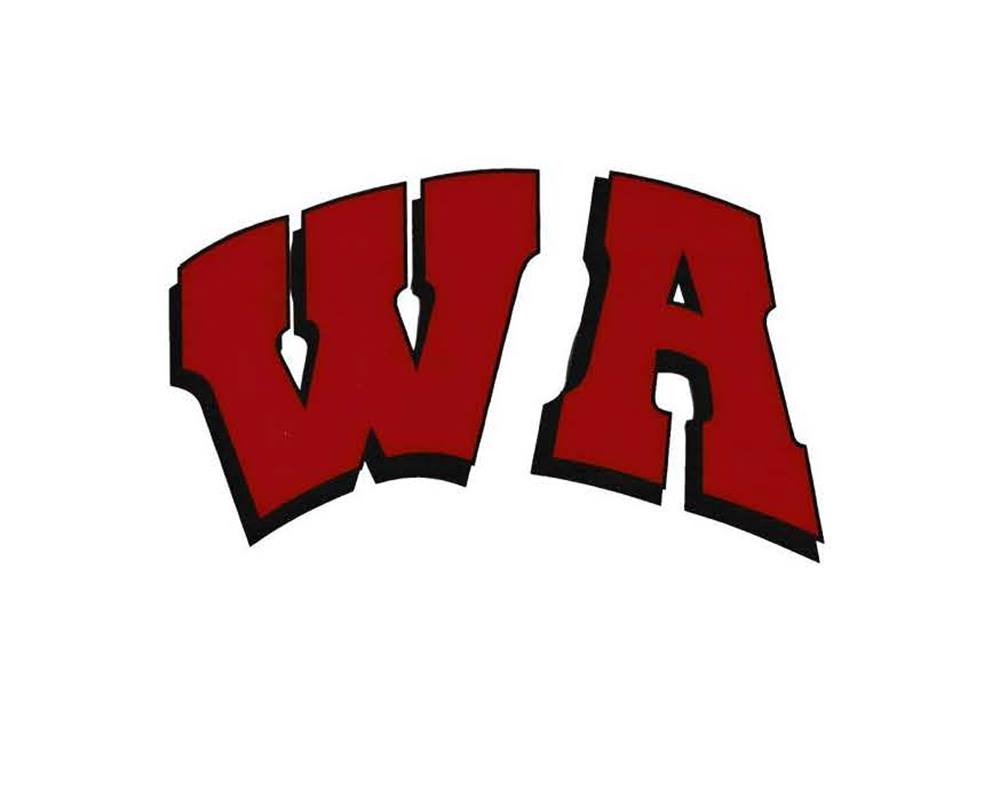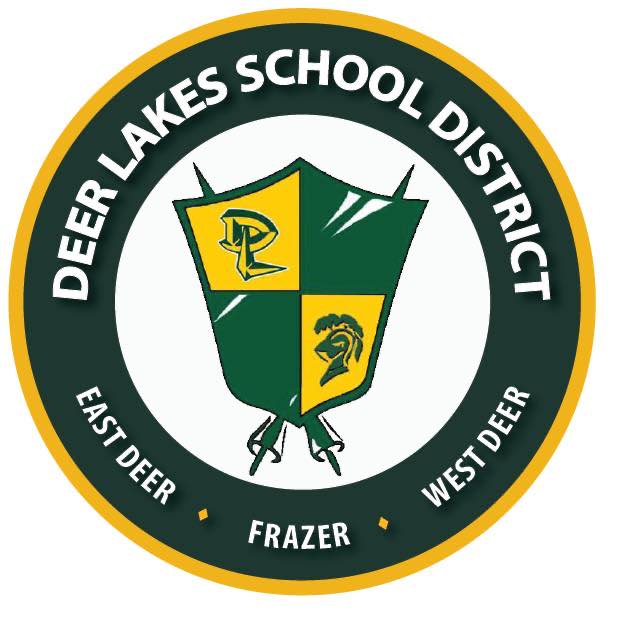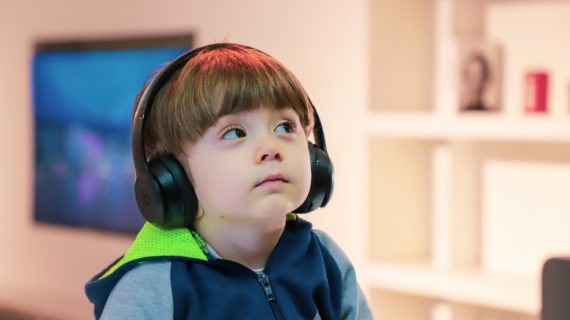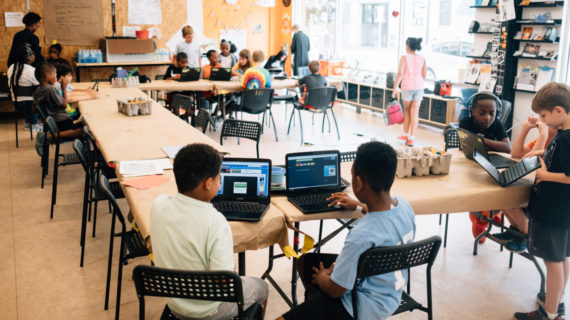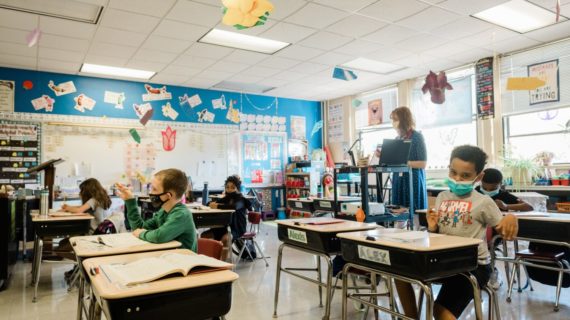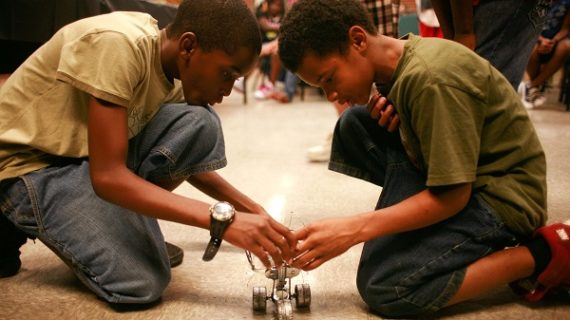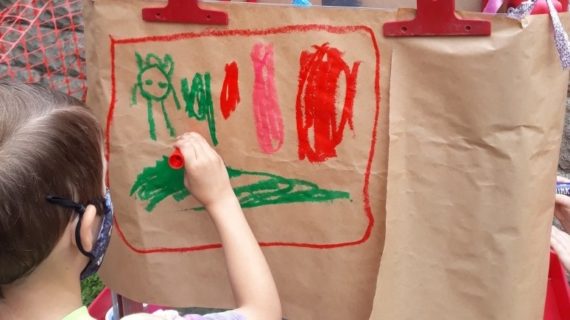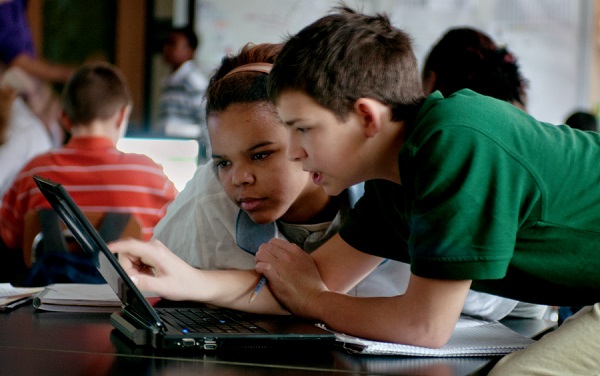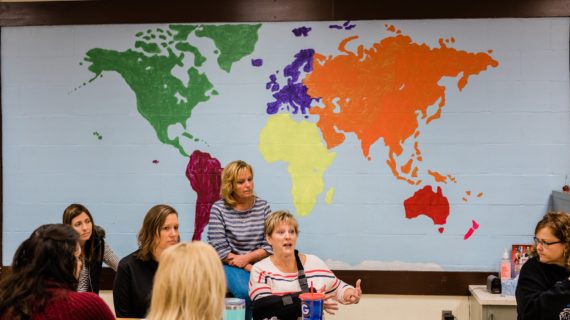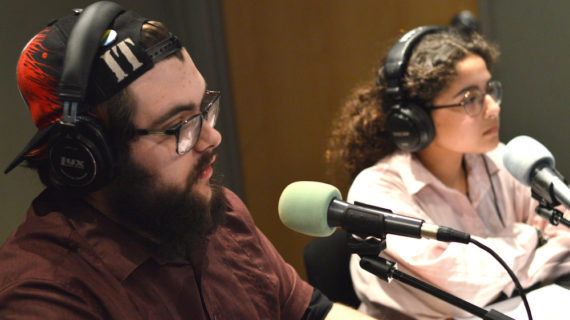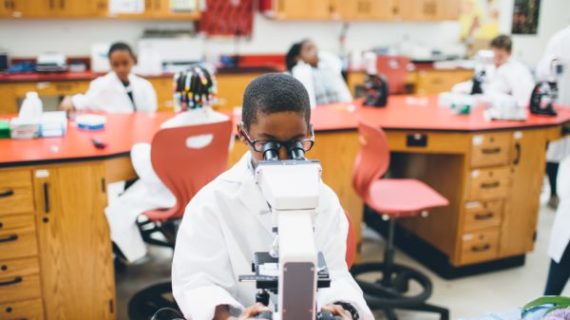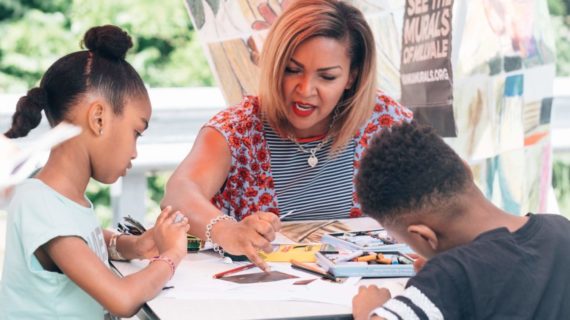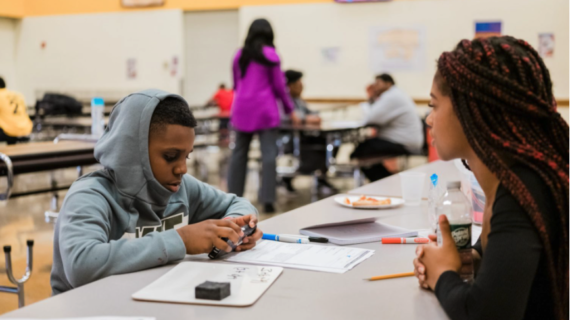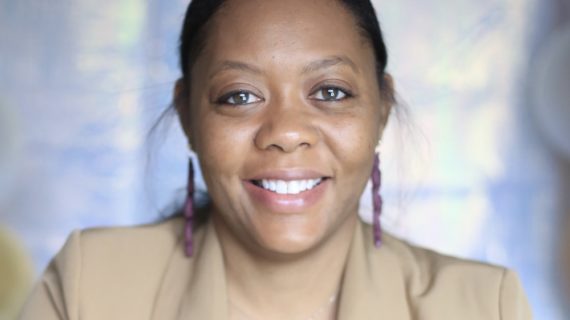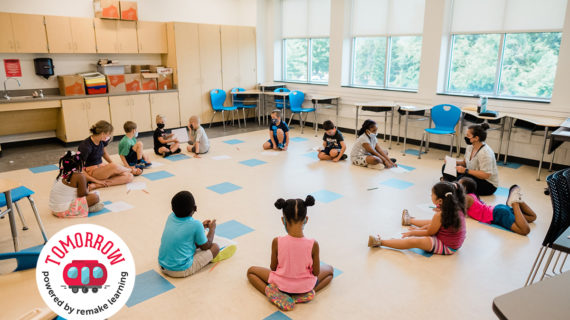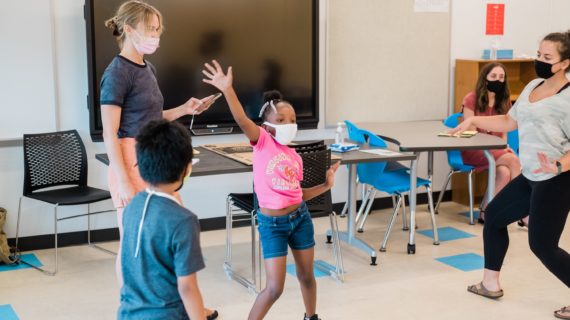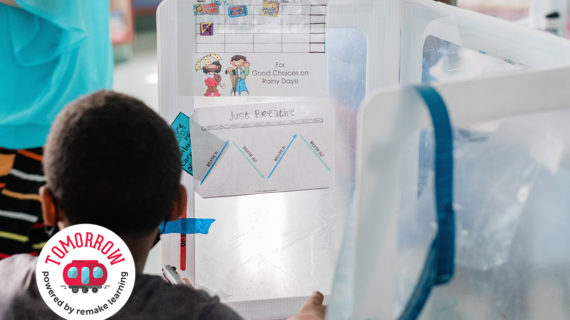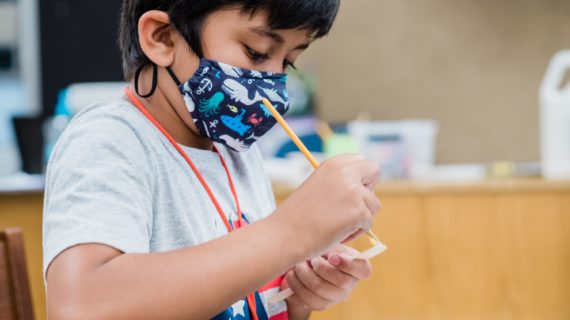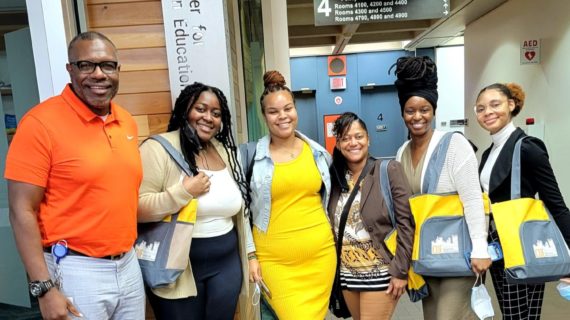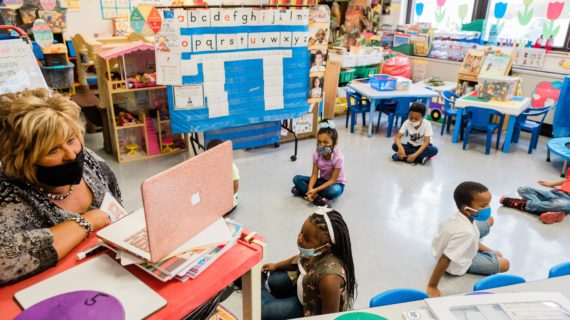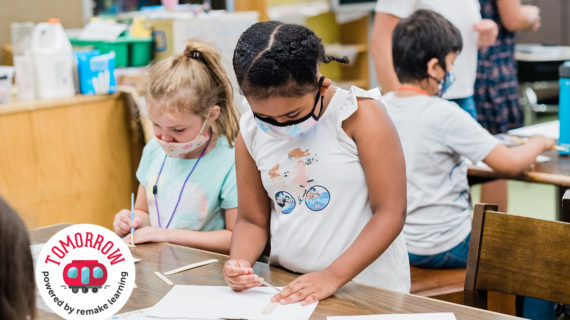
Wondering about the new school year? Timeless advice and new insight from local schools can help make it extraordinary.
Photo above by Artboard Studio used by permission via Unsplash.
After two school years filled with pandemic uncertainty, we are approaching… what? The only thing truly certain about this new school year is that we can’t know exactly what it will look like.
Even if COVID remains relatively at bay, other uncertainties remain. Mental health among students, families and teachers is a challenge our communities are just beginning to tackle. Concerns about school shooting violence have reemerged as another stressor. And in many school districts, we see a degree of political strife and disagreement over issues like teaching about racism.
So we look to the future with a lot on our minds, even as we feel that familiar back-to-school excitement. One powerful way to navigate all of this is with insight from a familiar neighbor: Mister Rogers.
Fred Rogers never stopped marveling at the wonders that could be found all around him. He encouraged adults and children to do the same. He also knew that young people learn best in an atmosphere of belonging, caring and respect. And he taught that each new challenge we face helps us be a bit more ready for the next one.
These ways of thinking are helping communities in western Pennsylvania and beyond to seize the opportunity that this new school year represents.
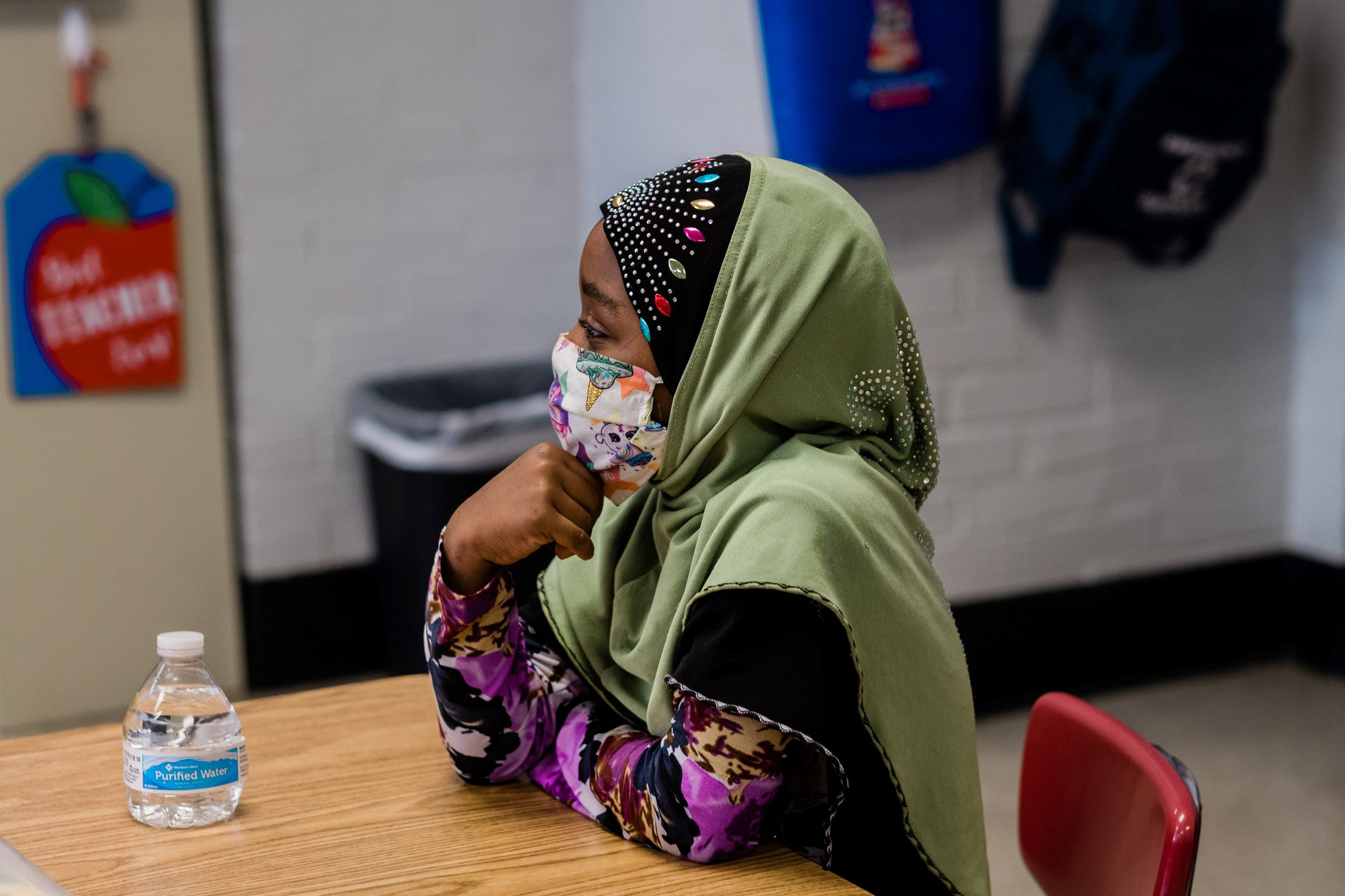
LOOK HOW FAR WE’VE COME
We have reason to step into this new school year with a sense of awe – truly marveling at what kids, families and educators did to keep the learning going these past few years. These moments of awe and marveling can energize us for the challenges ahead.
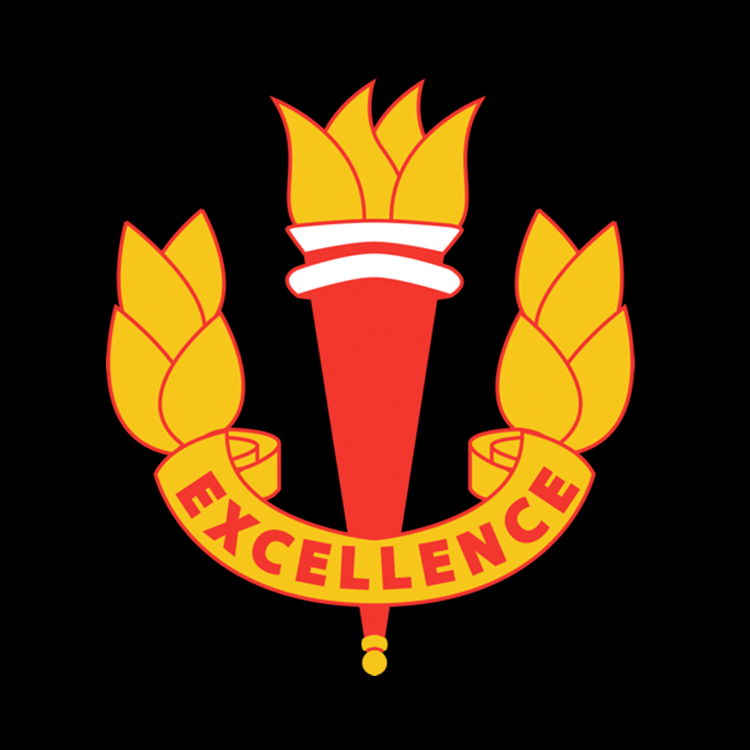
You hear that spirit in the voice of Meg St-Esprit, a mother of four kids ranging from pre-K to fifth grade, as she talks about the ways her children have handled pandemic learning. After homeschooling during the 2020-21 school year, her children returned to Bellevue Elementary in the Northgate School District for the 2021-22 school year. “They were just so resilient, jumping back in with their peers they hadn’t seen in a while,” she says, “and getting back into routines.”
There were challenges – long days spent in masks and many moments when her older kids were pulled out of class for additional reading and math support. Like so many of their peers, they were doing extra work to battle learning loss while trying to keep up with new lessons.
But they stuck with it. And as the last school year ended, a day came that made it all worthwhile.
St.-Esprit had volunteered to help at the school’s Field Day, and she stood in the sunshine that day watching her children and their classmates revel in the celebration. It had been two full years since they’d scrambled around inside inflatable ‘bouncy houses’ and teamed up with classmates for outdoor events. Racing around on the grass, they filled the neighborhood with mask-free laughter.
“When I saw them all on that field, just running around and still being normal kids, I was really emotional,” St.-Esprit says. “To me, it felt like this celebration of ‘However we got here, we made it here to summer!’”
In some ways, the 2021-22 school year was harder than the year before had been. As each new COVID variant emerged, normalcy fell away as cases surged. But schools, parents and kids handled all that was thrown at them.
“I wish they didn’t have to have been so resilient,” St-Esprit says of her kids. “But at the same time, it’s going to shape them in a lot of ways.”
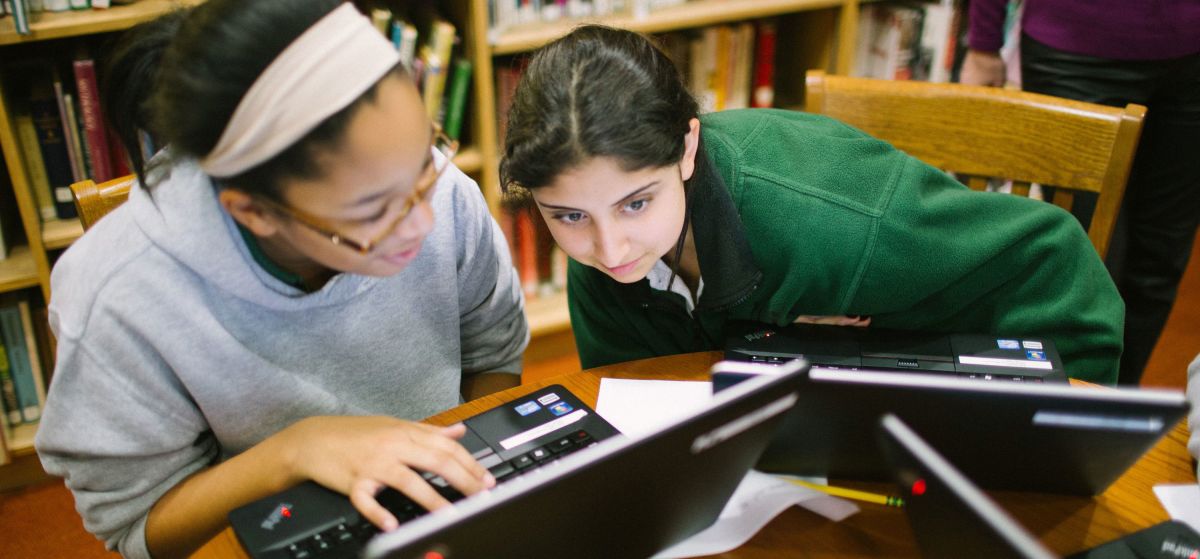
You hear that spirit in the voice of Meg St-Esprit, a mother of four kids ranging from pre-K to fifth grade, as she talks about the ways her children have handled pandemic learning. After homeschooling during the 2020-21 school year, her children returned to Bellevue Elementary in the Northgate School District for the 2021-22 school year. “They were just so resilient, jumping back in with their peers they hadn’t seen in a while,” she says, “and getting back into routines.”
There were challenges – long days spent in masks and many moments when her older kids were pulled out of class for additional reading and math support. Like so many of their peers, they were doing extra work to battle learning loss while trying to keep up with new lessons.
But they stuck with it. And as the last school year ended, a day came that made it all worthwhile.
St.-Esprit had volunteered to help at the school’s Field Day, and she stood in the sunshine that day watching her children and their classmates revel in the celebration. It had been two full years since they’d scrambled around inside inflatable ‘bouncy houses’ and teamed up with classmates for outdoor events. Racing around on the grass, they filled the neighborhood with mask-free laughter.
“When I saw them all on that field, just running around and still being normal kids, I was really emotional,” St.-Esprit says. “To me, it felt like this celebration of ‘However we got here, we made it here to summer!’”
In some ways, the 2021-22 school year was harder than the year before had been. As each new COVID variant emerged, normalcy fell away as cases surged. But schools, parents and kids handled all that was thrown at them.
“I wish they didn’t have to have been so resilient,” St-Esprit says of her kids. “But at the same time, it’s going to shape them in a lot of ways.”
CONSIDER THE ATMOSPHERE WE CAN CREATE
Back when Fred Rogers began explaining that kids learn best in an atmosphere of belonging, safety and respect, communities weren’t seeing the levels of anxiety and depression that we face today. His message couldn’t be more vital or timely.
For Kara Manion, a parent and teacher at Baker Elementary in the Upper St. Clair School District, creating that kind of caring, welcoming atmosphere has always been a priority. But it took on new urgency when the pandemic pivoted her from teaching second-grade in person to teaching kindergarten remotely.

“The only thing I could do is make sure that they felt safe and welcomed and a part of the classroom,” Manion says. “I couldn’t come help them find a pencil. But I could say, ‘I don’t care if you can’t find a pencil right now. Let’s pick up your finger and let’s draw in the air!’”
Elementary schools often focus on structure and following directions, Manion says, and those things are important. But these two school years have been a massive lesson in flexibility and creative problem-solving, she says – for students and for teachers.
Ultimately, having a pencil wasn’t what mattered for kindergarteners during the pandemic. What mattered, Manion says, was forming “deep and meaningful connections” to keep students “tuned in and engaged with other children and with me.”
She’ll bring that sensibility to her in-person classroom in Upper Saint Clair again this year, and she’s excited to see what kinds of learning and growth will happen for her students.
At McKee Elementary in West Allegheny School District, educators have the same focus in mind. One of the priorities at McKee this year is welcoming English-language learners and their families and supporting them in new ways.
The district is participating in the Parents as Allies research and grantmaking project, which is all about developing deeper connections between schools and families for the benefit of students. A team from McKee used their experiences with Parents as Allies to rethink the traditional “open house.”
Instead of inviting Spanish-speaking parents to tour the school with a professional translator, the school invited students from the district who speak Spanish as their first language to serve as translators at the event. The parents “were so excited to see the middle school and high school kids from their own neighborhoods,” says Melissa Wagner, McKee’s principal. “There was a comfort level that outside translators could never provide.”
And the open house became a two-way conversation. Through the student translators, the parents were asked: What are your hopes for your children this year? What are your fears? And what do you need from our school?
“Rather than just ‘Hey, come on and learn about our school and get familiar with it,’” Wagner says, “it was ‘Let’s take an opportunity to learn about you.’”
This collaboration with the student translators has also led McKee’s leadership to consider “how important it might be for us to involve middle school and high school ELL students in future planning,” Wagner says, “because they bring a perspective and experiences that lead us to deeper learning, and help us serve our families in better ways.”
Belonging, caring, respect. Small shifts in thinking and planning have put these ideas at the forefront and begun building a more cohesive community in the West Allegheny district. And that work will continue throughout this new school year.
REALIZE HOW MUCH CAN BE ACCOMPLISHED THIS YEAR
Just as our schools and families have found ways to handle the tremendous challenge of the pandemic, we can keep on improving the ways we learn and approach our rapidly changing, hard-to-predict future. Local school leaders are excited about building on and accelerating the progress they have made.
Bobbi-Ann Barnes, assistant superintendent at Deer Lakes School District, can’t wait to dive into this new school year. During a recent district administrative meeting, she took a moment to realize: We’re not knee-deep in discussions about preventing the spread of COVID. This year, we’re focused fully on educating our kids.
High on her list of priorities as school begins: Working with consultant Katie Martin and her team at the Learner-Centered Collaborative to build Deer Lakes’ “portrait of a graduate.” By setting a clear vision for the skills and knowledge graduates need, the district can make sure they’re using this school year in the best way possible.
Barnes is clear. This is much more than an intellectual exercise.
“’I don’t just want this to be a poster on the wall,” she told Martin recently. “We really want this to be meaningful. We want implementation.”
Dr. Samantha Abate, assistant principal at Deer Lakes Middle School and a parent in the district, agrees. This year can be infused with “a new sense of normal” – not a return to the past, but a fresh approach that pulls in all that’s been learned during the pandemic and makes room for truly candid conversations, Abate says.
What innovative practices emerged during the pandemic that schools had previously been afraid to try, she asks, and which traditional approaches need to be jettisoned because they no longer serve our schools?
The schools and families that Kidsburgh has spoken with have seen so much determination and so many accomplishments during the past school year. And they see the tremendous promise this new school year holds, and the confidence among educators and parents that progress can be built on and even accelerated.
After two years of pandemic learning, the fundamental goals of education have not changed, Abate says. But “the students and the parents and the stakeholders involved all changed … We need to kind of meet them halfway and change with them.”
If the pandemic has proven anything, it’s that change and innovation are truly possible – and truly necessary.
